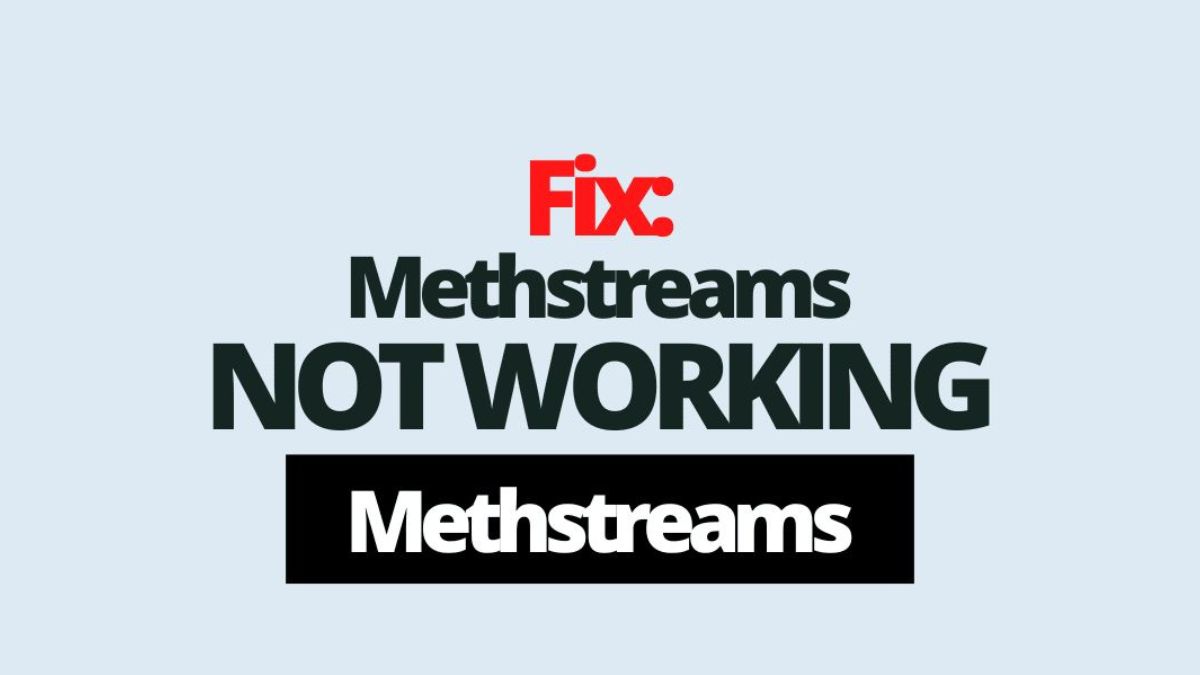In the age of rapid digital communication and social media, new words—and sometimes misheard or misspelled words—can spread quickly, often acquiring unintended meanings or viral traction before their validity is checked. One such term that has sparked occasional curiosity online is “methstreans.” A quick search may yield speculative forum posts, memes, or even alarmist claims, but a deeper investigation reveals a surprising truth: “methstreans” is not a real scientific, medical, or technical term. There is no peer-reviewed literature, no FDA-recognized substance, and no credible usage of the word in chemistry, pharmacology, biology, or materials science.
That said, the persistence of the term—however niche—warrants a thoughtful exploration. Why does “methstreans” appear in queries? Could it be a misspelling? A portmanteau? A fictional creation? This article aims to provide a thorough, evidence-based breakdown of the term, examine possible sources of confusion (e.g., methstreams, methanes, methadone, estrogens), clarify related real-world concepts, and offer insight into how misinformation or linguistic drift can generate apparent “facts” out of thin air. By the end, readers will gain clarity, critical thinking tools, and a better understanding of how to evaluate unfamiliar terminology—especially in health and science contexts.
Table of Contents
The Linguistic Puzzle: Deconstructing “Methstreans”
Let’s begin by dissecting the word itself. Methstreans appears to combine two morphemes:
- “Meth-”: A common prefix in chemistry, short for methyl (CH₃–), used in compounds like methane (CH₄), methanol (CH₃OH), and methamphetamine. It often signals the presence of a methyl group or a methyl-derived compound.
- “-streans”: This suffix is highly unusual. It resembles -steranes (a class of saturated hydrocarbons derived from steroids), -estrogens (a family of sex hormones), or possibly a corruption of streams. Notably, “estrean” is not a standard English or scientific root—but estrane is: the parent hydrocarbon structure of estrogen hormones (e.g., estradiol, estrone).
Putting these together, one might speculatively interpret “methstreans” as methylated estrane derivatives—i.e., steroid hormones with added methyl groups. While such compounds do exist (e.g., methyltestosterone, a synthetic androgen), none are officially or colloquially called “methstreans.” The term does not appear in the Chemical Abstracts Service (CAS) Registry, the PubChem database, or any authoritative pharmacopeia.
🔍 Key Insight:
“Methstreans” is most likely a misspelling, autocorrect error, or conflation of two real terms—especially methstreams (a known piracy site, discussed later) and estrogens. Alternatively, it may stem from mishearing phrases like “meth and estrogens” in audio content (e.g., podcasts, videos), leading to a blended neologism.
Common Misinterpretations and Confusions
Because language is fluid—and search algorithms are imperfect—users often land on “methstreans” while actually seeking information about something else. Below are the most probable sources of confusion:
1. Methstreams (Not Methstreans)
Methstreams was a notorious illegal streaming website that gained attention in 2022–2023 for broadcasting pirated sports content—especially Premier League football (soccer), UFC fights, and boxing matches—without licensing. The domain changed frequently (e.g., methstreams.one, methstreams.li, methstreams.is) to evade shutdowns. In November 2023, U.S. authorities, in coordination with the Premier League and other rights holders, seized its domains as part of a broader crackdown on illicit streaming services.
Many users searching for “methstreams” may have typed “methstreans” by accident—especially on mobile devices where “t” and “r” keys are adjacent. Autocorrect doesn’t always catch this, and once a misspelling is entered into search engines, it can propagate via suggestions and forum discussions.
2. Methamphetamine + Estrogens
Another plausible origin lies in pharmacological discussions. Methamphetamine (“meth”) is a potent central nervous system stimulant with high abuse potential. Estrogens are a group of steroid hormones responsible for female sexual development and reproductive function. In certain medical or biochemical contexts—e.g., hormone therapy in transgender care, endocrine disruption research, or drug metabolism studies—both compounds may be discussed in proximity.
For instance:
- Some studies examine how stimulants like methamphetamine affect estrogen levels or signaling.
- In forensic toxicology, analysts may screen for both classes of compounds in biological samples.
- Online communities (e.g., Reddit, health forums) sometimes simplify or misstate complex topics, potentially fusing terms like “meth” and “estrogens” into a single erroneous word.
⚠️ Important Clarification:
There is no approved drug, research chemical, or designer substance called methstreans. Combining methamphetamine with estrogenic compounds is not a standard practice and would be pharmacologically risky—stimulants and hormones act on vastly different systems, and co-administration could lead to dangerous cardiovascular or endocrine interactions.
3. Chemical Misnomers: Methanes, Steranes, and Estranes
Let’s compare legitimate terms that sound similar:
| Methane | Simplest hydrocarbon (CH₄), natural gas component | Environmental science, energy |
| Methanol | CH₃OH, toxic alcohol used in industry/fuel | Poisoning cases, alternative fuels |
| Estrane | C₁₈ steroid nucleus; backbone of estrogens | Endocrinology, medicinal chemistry |
| Androstane | C₁₉ steroid nucleus; basis for androgens (e.g., testosterone) | Hormone therapy, doping control |
| Sterane | Saturated polycyclic hydrocarbon; geochemical biomarker | Paleontology, petroleum geology |
None of these yield “methstreans” when combined or modified in standard nomenclature. IUPAC naming rules are precise; a methyl-estrane would be named systematically (e.g., 17α-methylestrane), not abbreviated to a nonstandard term.
Why Does “Methstreans” Persist Online?
Despite its nonexistence, “methstreans” occasionally surfaces in search queries, comment sections, and even AI-generated responses. This phenomenon can be explained by several factors:
✅ Search Engine Artifacts & Autocomplete Influence
Once a misspelling gains minimal traction (e.g., 10–20 searches), algorithms may begin suggesting it as a “related search.” Users clicking on it reinforces the signal—even if every click leads to a “no results” page.
✅ Meme Culture and Irony
Online communities sometimes invent absurd or pseudo-scientific terms for comedic effect (e.g., “the dab” as a unit of measurement, “unobtanium” in engineering jokes). “Methstreans” could have originated as satire—perhaps mocking overly technical jargon or conspiracy theories—then detached from its ironic context.
✅ Misinformation Ecosystems
In fringe forums or alternative health spaces, fabricated terms can be used to lend false credibility to unproven claims:
“New designer drug ‘methstreans’ 10x stronger than fentanyl—avoid at all costs!”
Such posts exploit fear and curiosity, often recycling old warnings with new names to evade fact-checking.
✅ AI Hallucination & Training Data Noise
Large language models (like me) are trained on vast internet text, including errors, typos, and fictional content. If “methstreans” appears—even rarely—in books, forums, or code repositories, the model may learn it as a potential token. Responsible AI design includes safeguards (e.g., grounding in verified sources), but users should always cross-check unusual terms.
Real-World Concepts That May Be Confused with “Methstreans”
To empower readers with accurate knowledge, let’s clarify four legitimate topics that are commonly—but mistakenly—associated with the term.
🧪 1. Synthetic Steroids and Designer Hormones
Pharmaceutical chemists do modify natural hormones to improve stability, potency, or delivery. Examples:
- Methyltestosterone: An oral androgen where a methyl group is added at C17 to resist liver breakdown. Used historically for hypogonadism—but carries hepatotoxicity risks.
- Ethinylestradiol: A synthetic estrogen in most birth control pills, featuring an ethynyl group (–C≡CH) at C17.
- Trenbolone: A veterinary anabolic steroid (not for human use) sometimes abused in bodybuilding. Structurally a 19-nor steroid—no methyl group, but often confused due to naming.
None are called “methstreans”—and none combine methamphetamine-like structures with estrogenic activity.
💊 2. Poly-Drug Use and Harm Reduction
People who use stimulants (e.g., methamphetamine) may also use hormones—for gender-affirming care, contraception, or performance enhancement. But combining them is not standardized or advised without medical supervision.
- Cardiovascular strain: Both stimulants and high-dose estrogens increase clotting and blood pressure risk.
- Metabolic interactions: Liver enzymes (e.g., CYP3A4) metabolize both classes—potential for altered drug levels.
- Mental health impacts: Stimulants can exacerbate anxiety or psychosis; hormonal fluctuations affect mood.
Public health agencies like the CDC and WHO emphasize integrated care for people who use substances and require hormone therapy—not DIY combinations.
🌐 3. Illicit Streaming Services (Methstreams)
As noted earlier, Methstreams was a piracy hub—not related to chemistry at all. Its shutdown highlights ongoing battles over digital rights:
- Operated via domain hopping and proxy servers.
- Funded by intrusive ads, malware, and (allegedly) cryptocurrency donations.
- Undermined sports leagues’ revenue models and exposed users to cybersecurity threats.
If you encountered “methstreans” in a tech or streaming context, it’s almost certainly a typo for Methstreams.
🧬 4. Endocrine Disrupting Chemicals (EDCs)
Some environmental pollutants do exhibit both stimulant-like and estrogenic effects—but again, none are termed “methstreans.” Examples:
- Bisphenol A (BPA): Weak estrogen mimic; found in plastics. Linked to developmental issues—not a stimulant.
- Phthalates: Plasticizers with anti-androgenic activity.
- Certain pesticides (e.g., atrazine): May alter amphibian sex development via estrogenic pathways.
True dual-action molecules (e.g., affecting dopamine and estrogen receptors) are rare and heavily studied in neuroendocrinology—but always named with precision.
The Role of Critical Thinking in Evaluating New Terms
Encountering an unfamiliar word like methstreans is a perfect opportunity to practice media and scientific literacy. Here’s a step-by-step framework:
- Check Reputable Sources First
Search PubMed, Google Scholar, CDC, FDA, or university websites. If zero credible hits appear, proceed with skepticism. - Look for Etymological Clues
Break the word down. Does it follow known naming conventions? (e.g., -ol for alcohols, -one for ketones, -ine for alkaloids.) - Reverse Image or Context Search
If the term appears in a meme or video, use tools like Google Reverse Search or browser extensions to trace origins. - Ask: Who Benefits?
Is someone trying to sell a product, spread fear, or gain clicks? Misinformation often serves an agenda. - Consult Experts
Pharmacists, chemists, or librarians can quickly verify terminology. Online, platforms like r/askscience (Reddit) or Stack Exchange offer moderated expert input.
Using this method, “methstreans” fails every test for legitimacy—reinforcing its status as a phantom term.
Conclusion: The Power of Precision in Language
The case of methstreans serves as a compelling reminder: in science and health, words matter. A single typo can spawn confusion, fear, or even dangerous behavior. While language evolves—and creative neologisms have their place in art and humor—technical domains demand rigor. Whether discussing hormones, stimulants, or streaming services, accuracy protects public understanding and safety.
We’ve explored why methstreans appears to exist (typos, conflation, algorithmic quirks), why it doesn’t (no scientific basis), and what real concepts it may obscure. We’ve emphasized critical evaluation and highlighted legitimate topics that deserve attention—like harm reduction, digital piracy, and endocrine science.
Frequently Asked Questions (FAQs)
Q: Is “methstreans” a new designer drug?
A: No. There is no evidence of any substance by that name in forensic databases (e.g., NPS Discovery, EMCDDA). Always verify drug warnings through official channels like the DEA or Erowid.
Q: Could it be a code name or slang in a specific subculture?
A: Extensive searches across drug forums (Bluelight, Reddit’s r/drugs), LGBTQ+ health communities, and bodybuilding sites show no consistent usage. Absence of usage over >5 years suggests it’s not established slang.
Q: Did a TV show, game, or book invent “methstreans”?
A: As of 2025, no major fictional work (e.g., Breaking Bad, Black Mirror, cyberpunk novels) uses the term. It does not appear in the Oxford English Dictionary or Urban Dictionary as a defined entry.
Q: What should I do if I see “methstreans” online?
A: Treat it as a red flag for misinformation. Investigate further, and avoid sharing unverified claims. Report harmful content to platforms.












